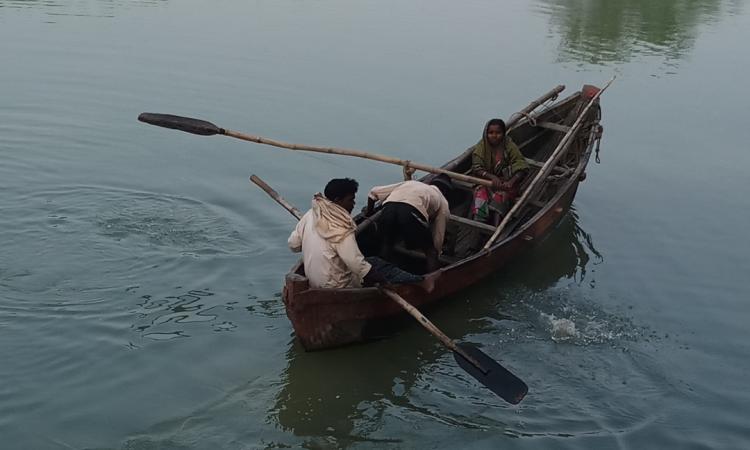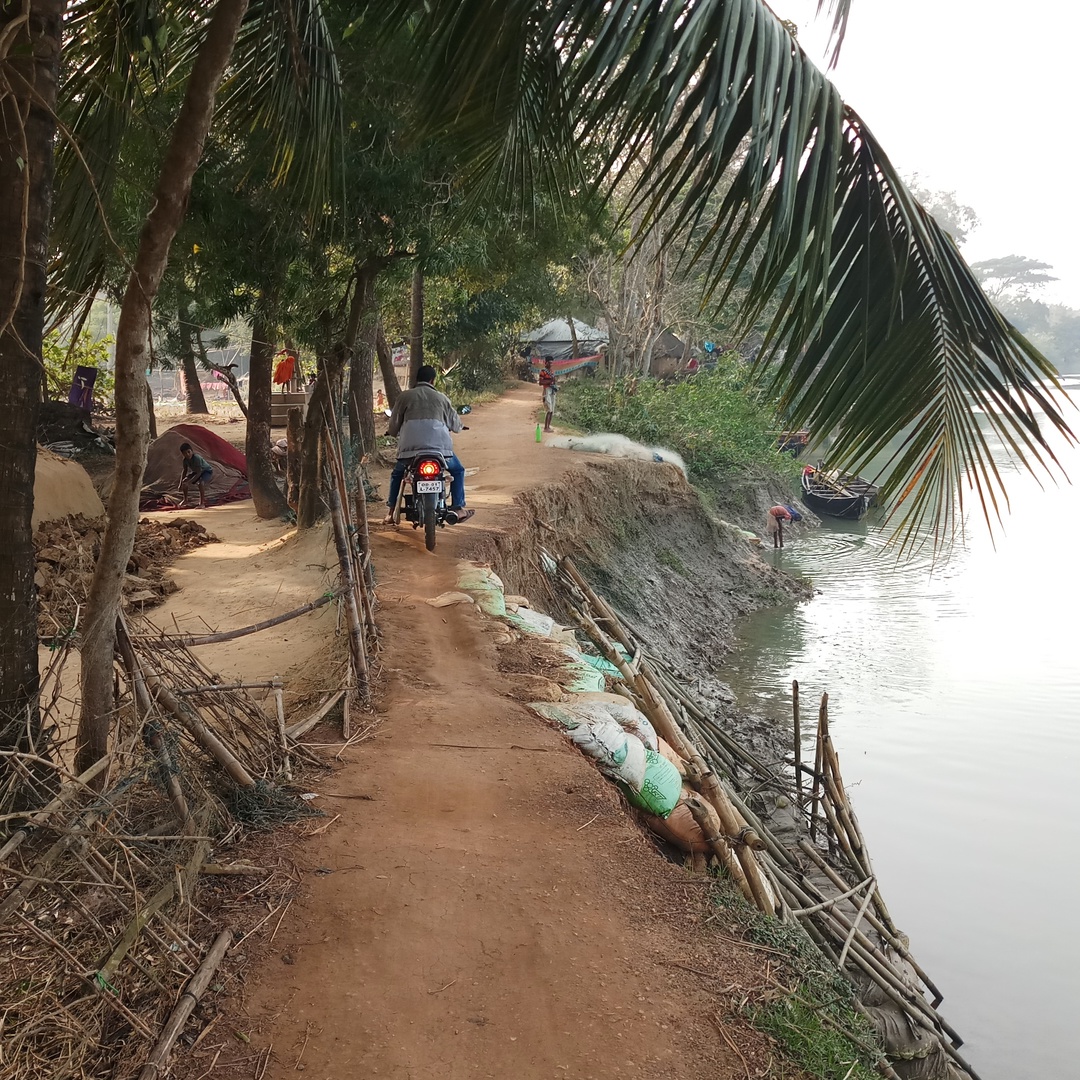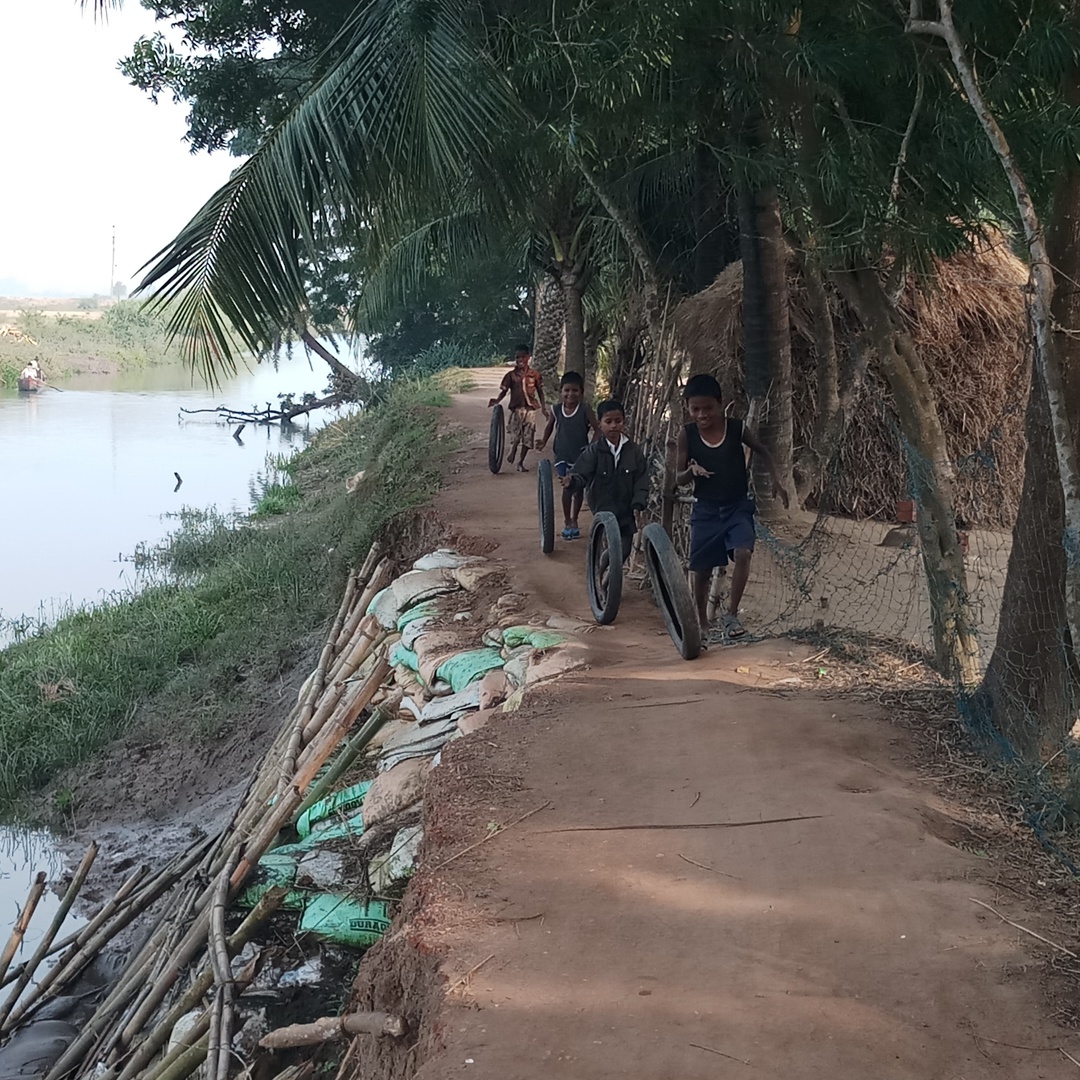
Ashok Kumar Dolai can hardly control his tears whenever he sees the river flowing near his house and a narrow red earth road snaking beside it.
The 26-year-old lost his pregnant wife in the first week of December after he failed to shift her to the nearest hospital in time because the road was too narrow for a four-wheeler. Doctors declared her brought dead when he reached the hospital carrying her on a rickety boat. He curses the river for the tragedy.
“The river is like a demon. It has not only been devouring our houses one after another but has also been swallowing our lives, our children, almost everything that is coming in its way,” he says, almost breaking down.
But he is not alone in grief. Villagers at Jamakunda panchayat of Baliapal block in village Bortalpoda, around 90 kilometres from Balasore, Odisha lament that people are dying and their houses are getting washed away in the river because of the constant erosion of mud coupled with the apathy of the administration. 
The river, a distributary of Subarnarekha, originates from Piska near Ranchi, the capital of Jharkhand and flows through the state and enters Bengal and Balasore in Odisha before joining the Bay of Bengal in Talsari in Balasore.
Over the years, the situation has reached a saturation point where the houses are now at a kissing distance from the river that has been slowly engulfing the mud and is inching towards the houses.
Houses, health and schools affected
Niyasi Dolai (53) says the water body is becoming wider and have encroached more area due to constant erosion. “I came here from Bengal when I was a child. The river was not so close to the village but slowly it has been meandering its course due to constant erosion. The distance separating us and river is just a few metres. A few villages in the nearby areas of Kulha, Nayapali and Ekrapal have already gone under the water,” he says.
The erosion caused by the river has paralysed normal life of the village with health and education facilities in shambles. According to the villagers, there are about 10,000 people residing in villages falling under the Jamkunda panchayat. Bartalpoda, with around 2400 people, is the worst hit.
Prakash Samal (41), a villager, says that the nearest health facility is five kilometres away but people find it difficult to traverse the road. “The situation is obviously grave because of the width of the road. The main problem is faced while carrying ill persons, pregnant women and senior citizens who cannot travel on a bicycle or motorcycles. The rickety boats are not only dangerous but they consume plenty of precious time which could be utilised to save the life of a patient. It could have been better if an ambulance managed to come to the village,” he says.
There are telltale signs of horror that the river causes in monsoon. Sujata Jena (32) points to the mark on the outside wall of her hut that is left by receding water level. “The water sweeps through our houses during monsoon and reaches to 3-4 ft. height. The dilapidated boats remain the only mode of connectivity to the outside world. We take shelter in a nearby school or other higher places to save ourselves from the breaching river. Nothing has been done by the government to better the situation,” she says while recounting their perils during the rainy season.
The constant erosion has also hampered the education of school-goers. “The frequent washing away of the mud has made the road narrow and risky. The bicycle has the risk of falling into the water. We walk for around 2 km to reach school because the ride on two-wheelers is fraught with risks. During monsoon, we remain absent for several weeks till the water level subsides,” says Esha Shrabani Jena, a class VI student of a government school.
River takes away livelihood
The situation is almost similar in other neighbouring villages of Trailoknathpur and Khaparbhetia falling in Kasaphala panchayat where several hundreds of people have become vulnerable to erosion. Locals say that the situation has been turning from bad to worse with each passing day as casuarina forest, that used to act as a barrier against the river, is being slowly washed away.
Hemant Pila (59) who has been running a tea shop near the Subarnarekha river bank for the past 23 years fears for his livelihood as the river has been inching towards his shop, “I have been running the shop for more than two decades and the river was quite far. The business was prosperous as people from nearby villages often came to my shop for a cup of tea. Those were the days. My family expenses were maintained by the earnings from the shop but situation has changed now as I hardly get customers. The constant erosion has brought the river very close to my shop and the villagers have fled to far flung areas. The business has massively suffered,” he says, while pointing to the earth that has already been washed away in the river. He, however, accuses the administration of doing nothing to check the erosion.
Braja Kishore Biswal, the local sarpanch, conceding that the problem is serious says that he has already sent a proposal to the authorities for the construction of a road on another side of the village. “The distributary has been causing damage wherever it is passing and the mud is being washed away but the situation has been severe in Bartalpoda where the stretch is vanishing. I have already sent a proposal to the state government to construct an alternative way to reach the village so that proper connectivity can be restored,” he adds.
What could be the solution?
The administration claims to have done its duty by placing sandbags and bamboo sticks to prevent erosion but these temporary measures have failed to curb the destruction. The bamboo sticks are getting weaker due to constant exposure to water while sandbags are getting flattened because of the movement of two-wheelers. “We have spent around Rs 5 crore to check erosion as sandbags and bamboo structures have been put in place. We are also trying to construct all seasonal roads for the four-wheelers to cross the area. We deploy boats during monsoon and National Disaster Response Force (NDRF) teams are also present to deal with any serious issue,” says Minati Jagdev, the BDO, describing the erosion as the work of “strong currents”.
Tanmoy Maity, an assistant engineer says that stone pitching is the only way to save the riverbank from further erosion. “The erosion can be stopped by doing stone pitching on both sides of the riverbank. The stones have to be placed under the river bed upto a height leading upto the walls of the river bank. The cracks between the stones are then to be carefully closed to prevent any seepage of water through them,” he says. He suggests certain rules to be kept in mind for stone pitching. The largest stones are to be kept at the bottom of the wall and smallest at the top. The gaps between the stones should be properly covered by the next course to prevent any leakage of water that might slowly reach the villages. The gaps should also be packed with smaller irregular stones. The face of the wall should be even with no stones protruding. The existing trees should not be uprooted unless they disturb the stone wall. Are the authorities listening?
/articles/too-close-comfort